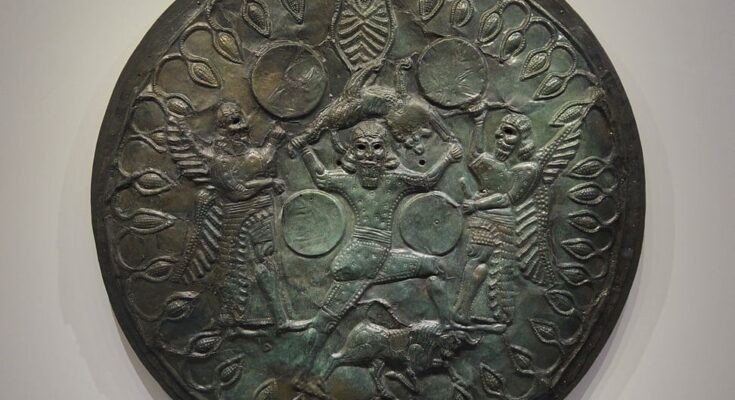
The Curetes were purportedly the first inhabitants of the Greek island of Crete. They were mythical creatures, specifically legendary benign deities who lived prior to the Minoan Civilization.
There are several myths and versions thereof about the Curetes, or Kouretes (Greek: Κουρήτες, plural). These only help to maintain a veil of mystery about the creatures and do not allow us to form a complete and clear image of them.
However, particular myths have prevailed, providing descriptions of mythical people who were the first so-called Cretans. The descriptions come from Greek geographer and historian Strabo (born c. 63 BC).
According to Strabo, the Curetes were five brothers. There was Heracles, not to be confused with the well-known demigod Heracles son of Zeus, Paeonian,
Epimides, Iasios, and Idas.
Legend has it that they were not born but sprung from the earth after Zeus’ first tears watered the ground when he was a newborn. This detail symbolizes the fact that they were not mere humans but also indigenous to the very earth of Crete.
Myth became tradition, and the Curetes eventually became known as the first inhabitants of Crete. It is assumed, without a verified etymological explanation, that the name Crete comes from the word Curete (C – u -rete).
Moreover, the word Κourete is very similar to the well-known word Kouros, which means “young man” in ancient Greek. Kori, meaning “young woman” or “daughter” in modern Greek, is the female equivalent.

The First Cretans and Guardians of Zeus
The Curetes are said to have been the first inhabitants of Crete who created the first civilization on the island. According to myth, they were responsible for every kind of discovery of that time and helped to organize a society.
They also played a crucial role in the birth and upbringing of Zeus, the greatest of the twelve gods of Olympus. Zeus was the son of Cronus and Rhea. When the time came for Rhea to give birth to Zeus, she chose a cave on Crete and asked the local Curetes for help.
Rhea did not want Cronus to know that she was carrying his baby. This was because of an oracle that Cronus had received saying that a child of his would snatch power from him. Hence, Cronus was not to know that Zeus was alive. Otherwise, the divine baby would be in danger.
Within the cave where they were guarding the infant Zeus, the Curetes made their first invention. They made a hanging cradle for the baby. Cronus was ruler of land, sea, and sky. The cradle of Zeus, although it was on the earth, did not touch it, just as it did not touch the sea nor sky. It was hidden in the bowels of the earth and therefore well protected from Cronus who ate his children so that they would not usurp power from him.
The Curetes and the Olympic Games
All in all, there were several inventions by the Curetes. They were, for instance, the first to engage with and teach humans the art of hunting. In fact, they made the first bow, but they were also believed to have come up with the concepts of animal husbandry, domestication of animals, and dancing.
It is said that the traditional dances of Crete that remain popular to this day, including pentozali, maleviziotikos, and pedichtos, stem from the pyrrhic dance of the Curetes. The first drum seems to have been made by the Curetes by stretching the skin of an animal. They then gifted it to Rhea. Moreover, the Curetes supposedly also developed beekeeping and metallurgy.
Legend has it that the Curetes were the founders of the Olympic Games. On an excursion in the forests of the Peloponnese, after resting for a while, the five brothers raced each other purely for fun. Idas placed a wreath on the head of Paeonian, who was the winner. It was a wreath made of olive branches imported from the north.
Thereafter, every five years, in commemoration of this event, games were held. These took place each half decade due to the fact that there were a total of five brothers. However, eventually, these games were stopped as a result of devastating floods.
Fifty years after the natural disaster, Clymenus, the descendant of Heracles, one of the Curetes, established an altar at Olympia in honor of the mythical founders of the Olympic Games. Essentially, he founded the legendary and globally well-known Panhellenic Games as a continuation of sports events that had taken place on Crete as early as the second millennium BC.
Lastly, the city of Heraklion is believed to have been named after Heracles of the Curetes.



